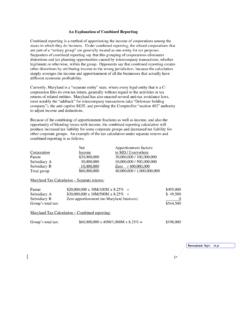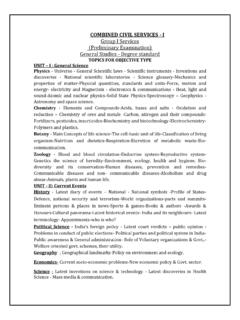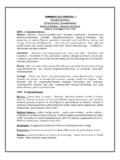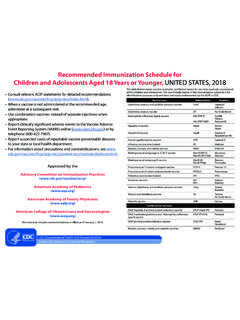Transcription of HORMONE REPLACEMENT THERAPY - Medsafe
1 HORMONE REPLACEMENT THERAPYT hese new key messages are based on recent research fi ndings on the risks associated with the use of combined HORMONE REPLACEMENT THERAPY and Estrogen REPLACEMENT THERAPY . They replace the advice published by the NZGG in May KEY MESSAGESCOMBINED HRT (estrogen with progestogen): combined HRT is not recommended for long-term use except in limited circumstances because the risks of breast cancer, venous thromboembolism (VTE), stroke and coronary heart disease (CHD) outweigh the benefi ts of fracture reduction and reduced risk of colorectal cancer. combined HRT should not be used for the prevention or treatment of coronary heart disease or stroke. For women at high risk of osteoporosis, combined HRT may be considered only where other treatment is not tolerated and the woman is at low cardio-vascular disease (CVD) risk and is fully informed of the risks of HRT.
2 combined HRT is effective for the control of troublesome menopausal symptoms of hot fl ushes and night sweats. However, even short-term use is associated with an increased risk of venous thromboembolism, stroke and coronary heart disease. HRT should only be used where menopausal symptoms are troublesome and women are fully informed of the ESTROGEN THERAPY Unopposed estrogen REPLACEMENT THERAPY should only be used by women who have had a hysterectomy. Unopposed estrogen REPLACEMENT THERAPY is effective for the control of menopausal symptoms of hot fl ushes, night sweats and vaginal dryness. Use of unopposed estrogen REPLACEMENT THERAPY is associated with an increased risk of venous thromboembolism. Use of unopposed estrogen THERAPY may be associated with an increased risk of ovarian cancer.
3 Use of unopposed estrogen THERAPY (for more than 5 years) is associated with an increased risk of breast cancer. It is not clear whether unopposed estrogen THERAPY increases the risk of CHD and stroke. Further defi nitive information is expected by 2005. In the meantime, women should be informed of the lack of evidence for CHD and stroke benefi t or MENOPAUSE The new studies have not provided any data on the risk or benefi ts for women with premature or surgical ESTROGEN THERAPY Topical vaginal estrogen (cream or ring) is effective for the control of vaginal dryness and is safe to use long-term in doses that do not cause systemic LINEUPDATESEPTEMBER 2002 NEW INFORMATION ABOUT combined HORMONE REPLACEMENT THERAPYThe New Zealand Guidelines group HRT Guideline Development Team reconvened in August 2002 to discuss the implications of the publication of three articles in JAMA on the 3rd and 17th of July on the New Zealand guideline entitled The Appropriate Prescribing of HRT which was published in May fi rst article published the results of the Women s Health Initiative (WHI) trial that had looked at the effects of combined HRT in healthy postmenopausal women aged 50 to 79.
4 The trial, initially due to report in 2005, was stopped prematurely because of an excess risk of breast cancer in the HRT group and an increase in the global index that was designed to weigh up the risks and benefi ts of second study reported was the year follow-up to the original Heart and Estrogen REPLACEMENT Study (HERS) study of HRT in women with known cardiac disease. The third study was a large cohort study of unopposed estrogen THERAPY use and the risk of ovarian HRT guideline recommendations and key messages have been adjusted to incorporate this new evidence and will be accessible on the NZGG website at a later date. The site is is now more certainty about the risks and benefi ts of combined HRT. It is clear that combined HRT should not be used for the treatment or prevention of cardiac disease.
5 The increased risk from heart disease, stroke and breast cancer means that combined HRT is no longer recommended as fi rst line treatment for the prevention of osteoporosis and fractures. It was considered important that all women contemplating combined HRT for the treatment of menopausal symptoms be better informed of the risks of HRT and of alternatives for managing their symptoms. The other part of the WHI trial, assessing the effects of unopposed estrogen THERAPY in women who have had a hysterectomy, is continuing and results are expected by 2005. It is expected that the HRT Guideline will be fully updated in 2005. This will involve new literature searches and assessment of all the evidence that has emerged since publication in further information on these studies and guideline was developed by Jenny Carryer, Sandra Coney, Cindy Farquhar, Sue Furness, Rod Jackson, Beverley Lawton, Anne Lethaby, Frances McClure, Stella Milsom, Ian Reid, Helen Roberts and Fiona Stewart, with funding from NZGG.
6 Printing of the HRT guideline update has been generously provided by and copyright of New Zealand Guidelines group (NZGG), Box 10 665, Wellington, phone FOR PRACTITIONERS AND WOMENIn view of the increased risks of combined HRT reported in the WHI study, women should only consider short-term use of HRT if they have problematic hot fl ushes and night sweats. This new information has implications for women presently using HRT as well as for future consultations with women who are considering HRT use. The continued use of HRT should be reviewed by women and their doctors at the time of the next prescription or within 3 months whichever is sooner. In order for women to make fully informed decisions, review should include discussion of: indications for HRT use duration of treatment risks/benefi ts of treatment other prevention, treatment and management from HRTWhen the woman decides to stop taking HRT, practitioners should be proactive in assisting and advising women in their withdraw from who have been using HRT for fl ushes should be advised that slow withdrawal is important to avoid rebound fl ushes.
7 The dose of estrogen should be gradually reduced over a period of 6 12 weeks continuing with the dose of progestogen until the estrogen is stopped. Some women may require a longer period of time to reduce the dose. Mild fl ushes that appear during the withdrawal of HRT may be self-limiting and of short is not known how long it takes for the CVD and VTE risk to return to baseline after stopping combined HRT THERAPY . The increased risk of breast cancer disappears 5 years after unopposed estrogen THERAPY is discontinued. It is not known how long it takes for breast cancer risk to return to baseline after stopping combined HRT for reducing HRT doses graduallyUsing a lower dose HRTA lower dose of the existing HRT can be used or change to a lower strength brand.
8 This lower dose can be used for 2 3 weeks, then you should alternate the pills with one day on and one day off, then one pill followed by two pill-free days and so on until the reduction is HRT pills in halfSome HRT brands (eg, Trisequens) can be cut in half and the regimen above for lowering the dose a patch with reducing dosesThe use of the matrix estrogen patch can be an effective way of reducing HRT. Small increments can be cut off the patch each week so lesser amounts of HRT are applied. This may be easier for some women than reducing oral HRT with premature menopauseThere are limited data on the risks or benefi ts for women with premature or surgical menopause. These women should be reviewed for management of their symptoms and advised about bone protection. There is some consensus that women with premature menopause may be treated with HRT up until the age of 50.
9 However, more data are required.
















